North Macedonia: 8 Fascinating Days
North Macedonia – a fascinating find!
I like travelling to unusual places: Turkmenistan, Mauritania, North Korea – all sorts of odd places. But this time, I felt it time to continue my exploration of The Balkans with a look at one of the more quiet countries in the region, North Macedonia.
A week in North Macedonia has been a remarkable transition. From what and too what, I am not quite sure, but suffice it to say, that this rather off-the-beaten (actually any) -track has been a tonic. I have loved it for its ordinariness.
There was no particular draw. It is a country more often passed through than visited, indeed, I had hitchhiked through it when it was a part of Yugoslavia in 1976; one of the more remarkable rides of my enormous thumbing career, a single ride from the Greek/Macedonian border to my flat in London. But that was as far as my Macedonia experiences went. Then it suffered for some years being known as “FYROM”, hardly a draw, and previously as one of the constituent parts of the Yugoslav state.
So, with few expectations I flew to Skopje a week ago, and immediately avoided the capital (I am like that) and drove to Tetovo, a town known for its painted mosque and little else. I found not only the mosque, but also a thriving community that seemed to function well, and the best salad I have ever eaten in a long, long time.
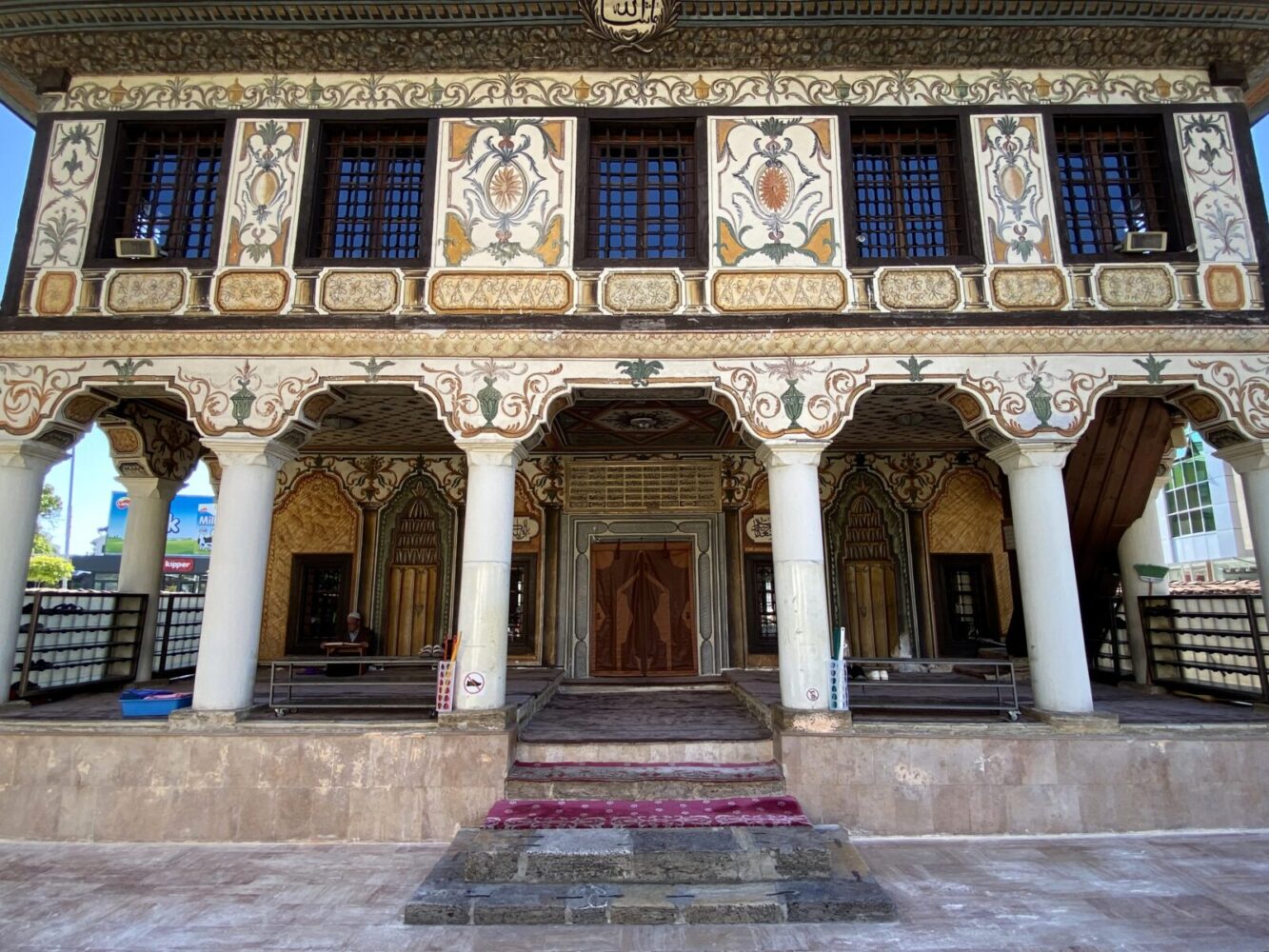
One of the more remarkable shocks when travelling to poorer countries is that their agriculture has not been taken over by expensive chemicals. Peppers are irregularly shaped; carrots have character and tomatoes actually taste pleasing. Food assumes a quite different quality.
It was an observation and narrative that was to follow me for the next several days.
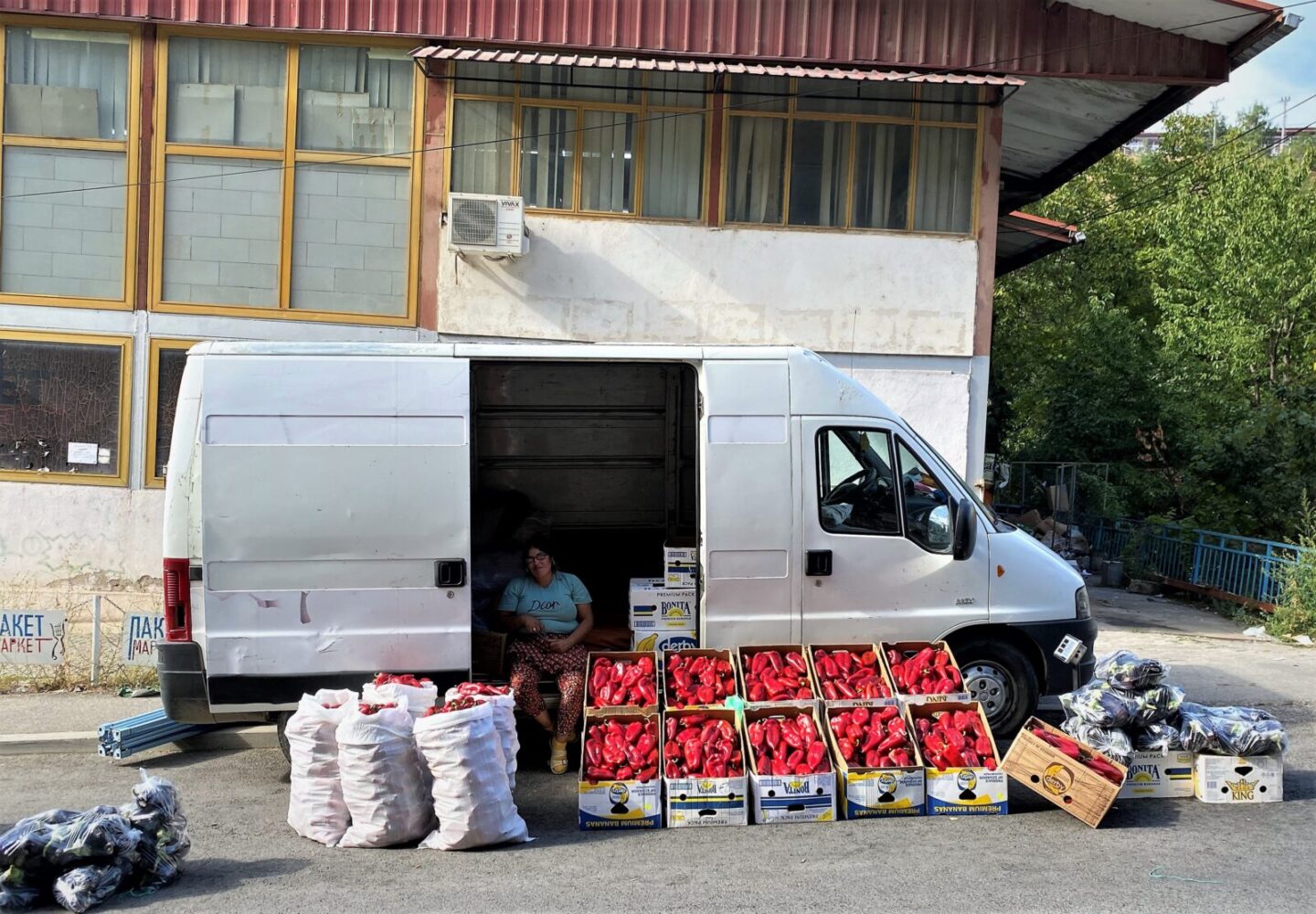
North Macedonia makes much of its two connections to the world at large: Alexander the Great and Mother Theresa. Each have an appropriate number of airports and highways named for them, museums to their successes and the odd affirmation on a banknote.
But in general, the whole spirit of North Macedonia is day-to-day living. It is such a refreshing antidote to the manic development of tourism that so overwhelms the brand destinations from Venice to Miami and from Barcelona to Hawaii.
I have long thought that one of the main drivers of over-tourism is The Web. Run, as it is, by algorithms driven by the raw power of advertising budgets, it is unsurprising that a few destinations, all attractive in their own way, can drive themselves to the top of the pile. By presenting themselves first to travellers, their sheer dominance is guaranteed.
Think, for one moment, of the difference between the major brands and other, potentially competitive destinations. Venice and Trieste; Florence and Bologna; Costa Rica and Nicaragua. There are differences, of course, but is it really worth four to five times the price for everything from a hotel room to an ice cream, or four to five times as long to line up to see a museum?
Well, North Macedonia certainly doesn’t have that problem.
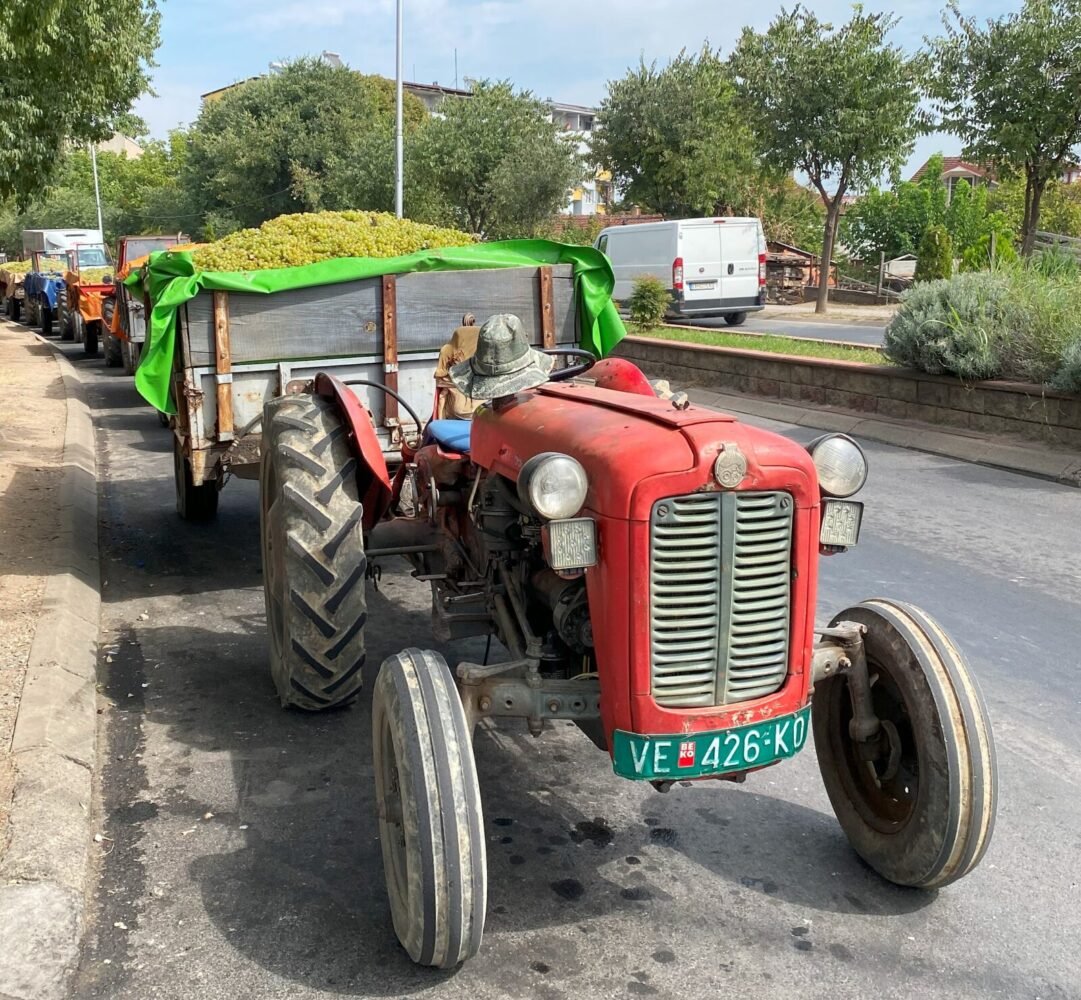
It is an under visited country, full of small, mildly interesting sites. It is the Dim Sum of tourism. And in that, lies its strength. A scattering of one-hour sites, decent Greek ruins, country museums, volcanic oddities and a simply gorgeous lake are the Macedonian tourism industry. It is the antithesis of mass tourism, and for that I am grateful, and a little ashamed of writing about its attractions in case some might believe me.
I rented a car with the vague idea of spending time driving anti-clockwise around this basically circular country. Armed with the insights from a few blogs (some helpful, some pushing for ad revenue), I headed for Ohrid, the jewel in the country’s tourism crown. I found it disarming, and although attractive, and with a rather pleasing castle, the massive assortment of laminated menus, colourful umbrellas, ice-cream stalls and fridge magnets were of little interest.
The lake, on the other hand, is simply gorgeous. Massive, deep and ancient, Lake Ohrid is one of Europe’s most interesting geologic phenomenon. It is one of Europe’s oldest and deepest lakes, I was advised, although this was not obvious from simply gazing at it, but by observation I can advise that it is extremely beautiful. I found a fine place, some ten kilometres south of the main town to stop and could not have enjoyed the tranquility more.
Sunsets, gentle boats, indeed the entire panoply of lake-infused prose were there for the taking. It was simply lovely.

But not sufficient to keep me there. Although I had felt that a week would be sufficient, I always underestimate these things, and was now, only two days in, conscious of the depleting time, and wanted to see as much as possible.
I headed on to Bitola, a major town, interesting for its Greek/Roman ruins and a long, pedestrianised street full of coffee, ice cream, beer and fridge magnets. In general, I take these walks for granted, but as the Shirok Sokak is deeply ingrained in the community’s tourism DNA, I walked it both ways.
The ruins at Herclea Lyncestis are interesting. Not in the manner of Carthage or the Pyramids, but in their scale and the lack of visitors. It seemed to have lasted for about 1,000 years from about 4th century BC to the 6th century AD; an unremarkable life, but one that clearly involved interesting urban planning, some fine mosaics (although why they are left out in the sun bewilders me) and some evidence of a very pleasant life.
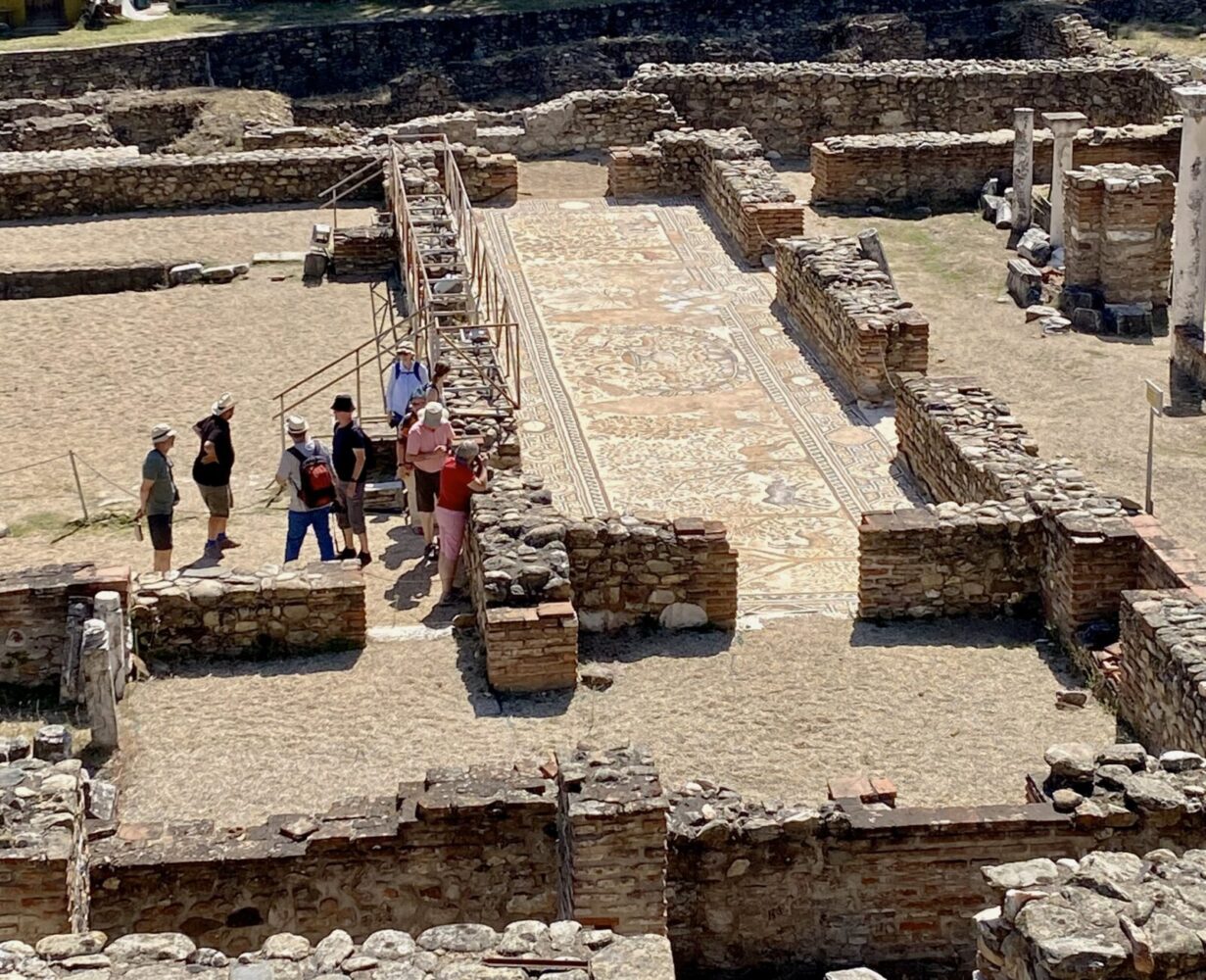
Modern Bitola was fine. In a way, the most interesting feature was that it was uninteresting; a place for people watching, whiling away the time, and a rather attractive evolution from the post-Soviet era. Actually, I loved it; beer was reasonable, people were interesting, and I found myself lulled into the ordinariness that was becoming so comfortable.
Until the birthday party.
It must be said that Macedonian children know no limits of squealing volume, no boundaries of time and certainly no interest in avoiding an old gentleman trying to have a quiet glass of wine at about 9.30pm in his hotel bar.
This was a negative; and one that was to be repeated.
I headed north in the morning with absolutely no destination in mind. North Macedonia is that sort of place. While one town may be similar to another, the topography gentle but not overwhelming and few major tourism sites to attract, it encourages aimless wondering.
And what a wonderfully freeing feeling that is.
I ended up in Kratovo, a small town in the northeast, and stayed at the lovely local hotel, The Kratis; the six-year-old’s-birthday-party was the only negative.

I had no idea that Kratovo existed; but it does, and with it a lovely Old Town of cobbled streets, a couple of bars, and fabulous small market, a deep ravine that exposes the town’s life and nearby, a remarkable collection of volcanic pipes.
The Stone Dolls are lovely. Perhaps a volcanic oddity; or perhaps the result of a sour-tempered spirit living close by and who, infuriated by the joyful sounds of a wedding commanded (successfully) that all attendees be immediately turned into stone. One never really knows, but the resulting site, overseen by the delightful and slightly bewildered owner Milos, is well worth an hour of anybody’s time.
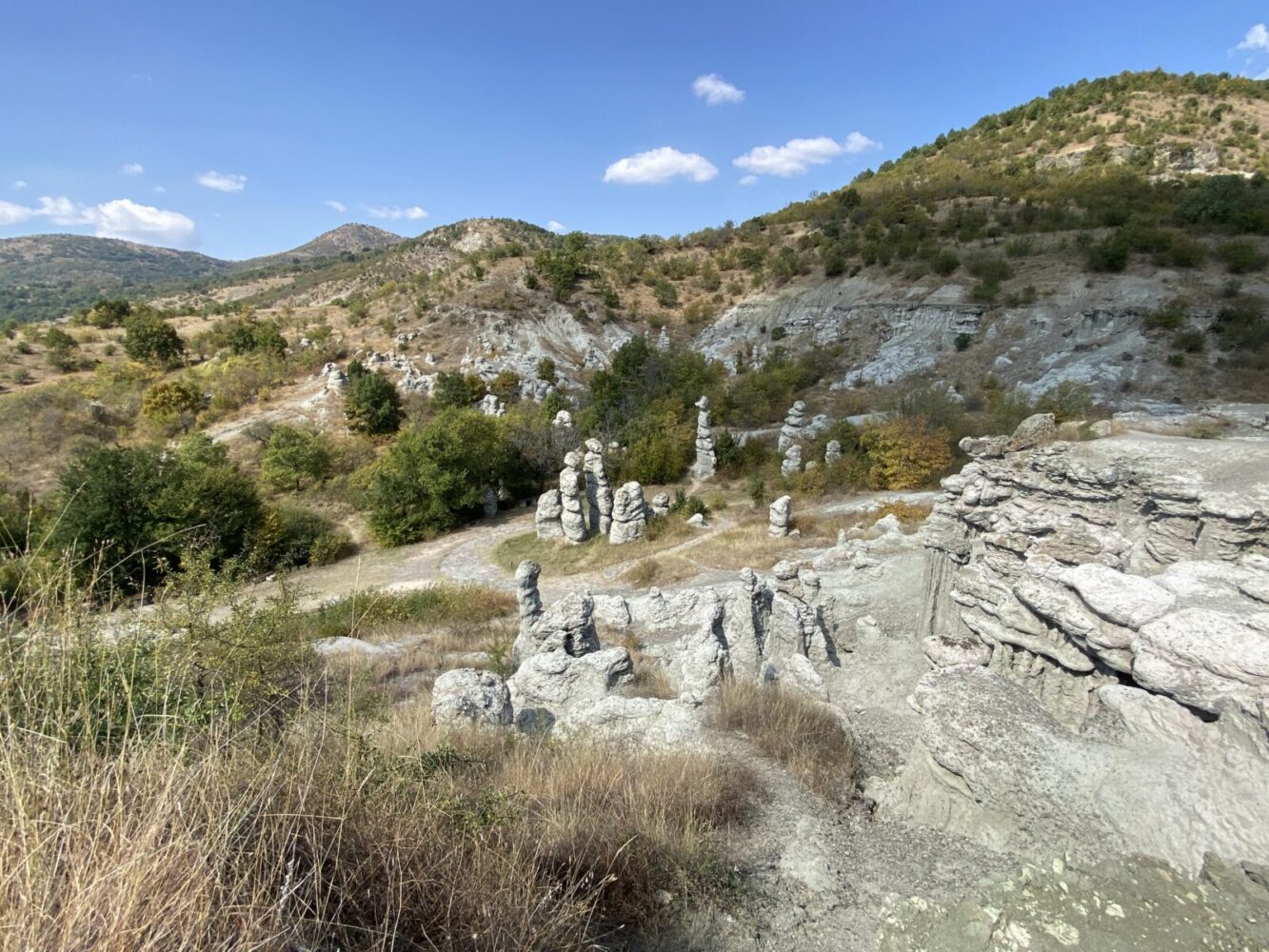
And it must be said that the positioning of the bridal party and guests, stone as they now are, is a rather amusing spectacle.
Regrettably, I needed to return to Skopje, the capital, to complete the journey.
Regrets borne solely on the tide of normality that characterised the journey. Skopje is lovely, full of statues, parks and the ephemera of capital cities, but the real story is North Macedonia itself.
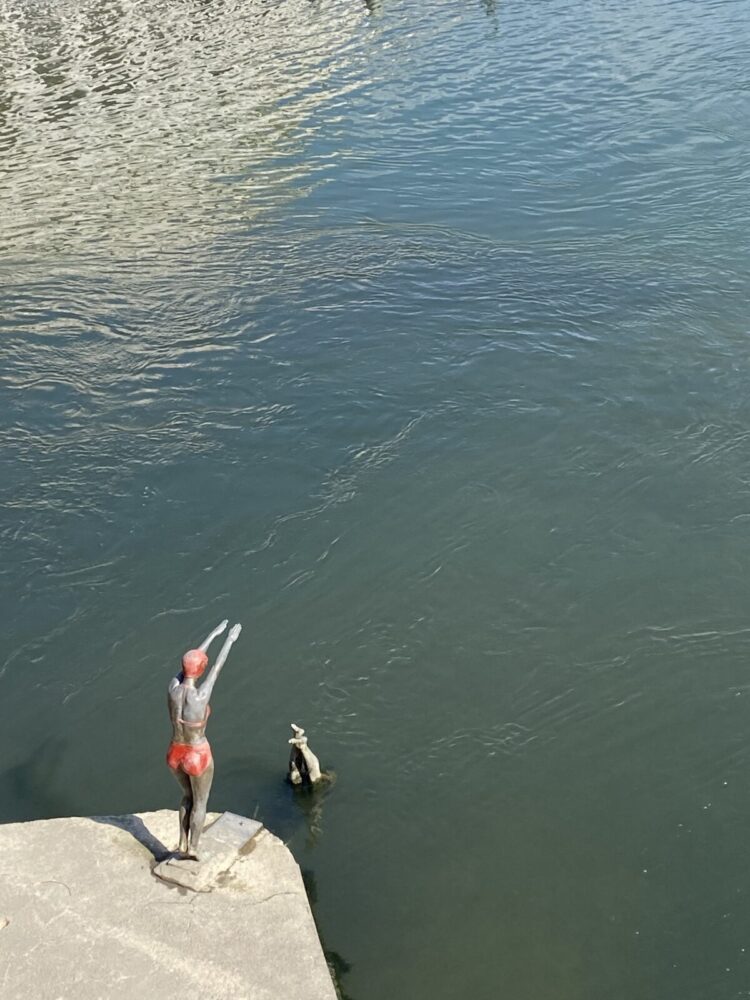
It is a fine country; one that embraces visitors by its familiarity. One that doesn’t need to be “world beating” or “unique”; a country that simply lives. It is the antidote to mass tourism, and for that I am grateful for the opportunity to briefly explore.
I know that I will be back, and poking into more remote regions, loving the food and hoping to be invited to participate in the inevitable birthday parties.
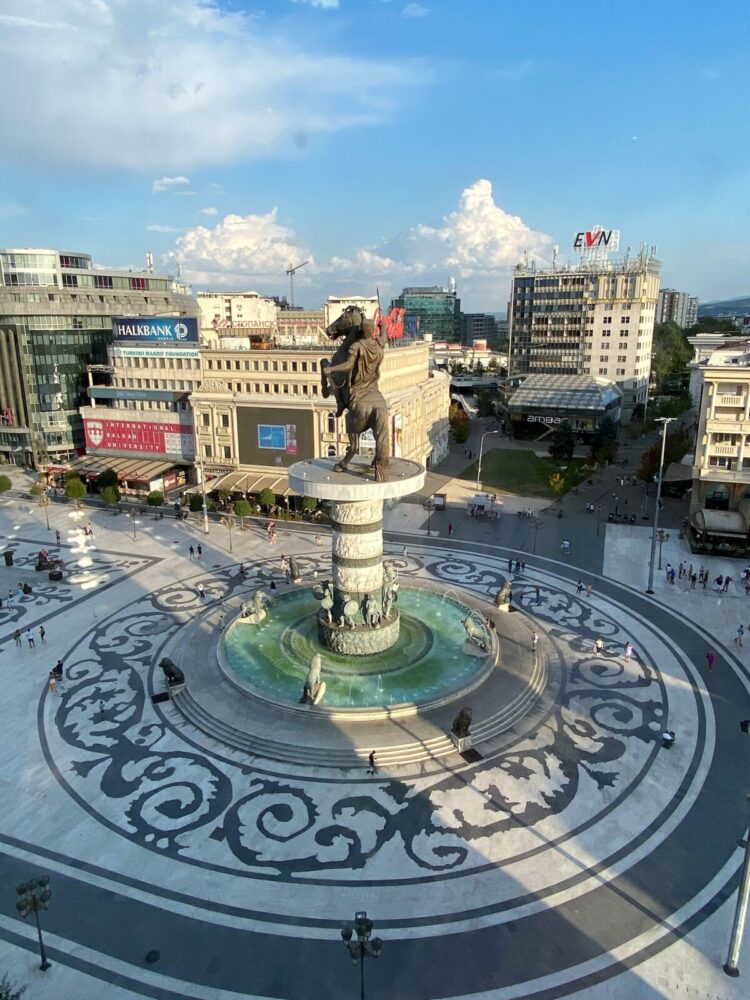
First Published by GoNomad – October 2023
